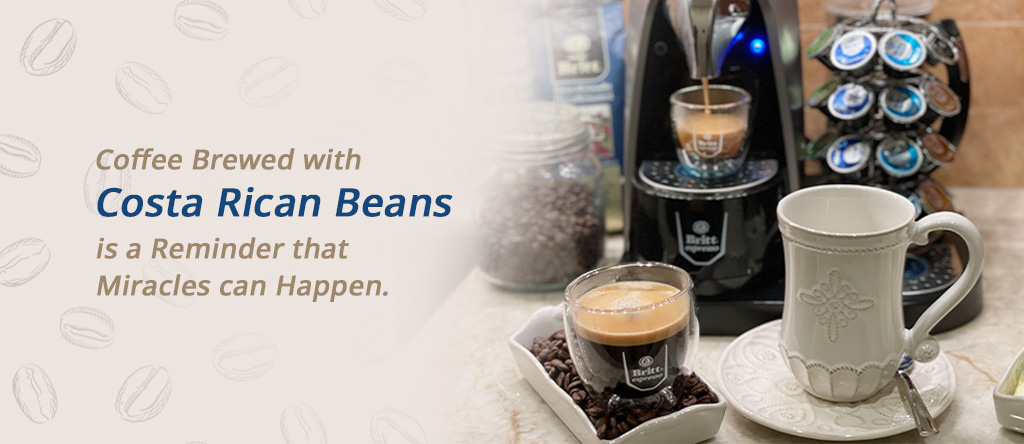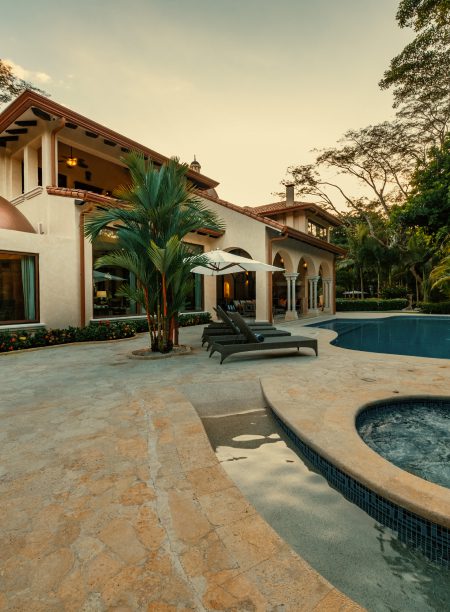Imagine waking up to the warm embrace of your morning coffee, a ritual as personal as it is uplifting. Whether you’re a fan of bold black coffee, a sprinkle of comforting cinnamon, or the silky magic of creamer, your daily brew is a canvas for self-expression. And let’s be honest—nothing quite beats that first sip, that instant soul hug that sets the tone for the day ahead.
Now, let’s take a little detour to Costa Rica, where life dances gracefully in the enchanting Blue Zone of the Nicoya Peninsula. Not only is this place a haven for centenarians, but it’s also a coffee powerhouse on the world map. Picture this: Costa Rica contributing over one percent to the global coffee symphony—a flavorful feat that tells the tale of rich, aromatic beans traversing the world. Coffee isn’t just a drink here; it’s an art woven into the tapestry of daily life. A sip of this wonder elixir, bursting with antioxidants that sprinkle a little longevity, is the heartwarming punctuation to every tropical moment.
Now, back to you—brewing Costa Rican coffee at home shouldn’t be a head-scratching puzzle. With a dash of know-how and a sprinkle of enthusiasm, your homemade cuppa can rival your favorite café fix. Buckle up for a fun ride through some super-easy tips that’ll turn you into a home barista extraordinaire. Wave goodbye to bland mornings because your coffee game is about to get seriously exciting!

Starting Your Costa Rican Coffee Journey
Begin your brewing adventure with a simple yet crucial step: choosing the right beans. The foundation of an exceptional cup lies in the freshness and quality of your beans.
- Freshness Unveiled: Elevate your brewing experience by embracing the magic of freshly roasted beans. Once you savor their exquisite flavors, you’ll find it hard to return to the uninspiring store-bought options. Steer clear of pre-ground or aged beans—these won’t unleash the full spectrum of taste, no matter your efforts.
- Exploring Bean Sources: Embark on a quest for the perfect beans. If you’re here in this Central American country or back home, scout out local roasters specializing in Tico coffee. They’re your gateway to authentic, freshly roasted goodness. Strive to secure beans roasted within three days to 2 weeks, ensuring peak flavor.
- Diving into Tropical Coffee Essence: Coffee from Costa Rica isn’t just a beverage—it’s an integral part of the country’s culture and heritage. Understanding its essence unveils a tale of dedication and passion resonating globally.
- A Historical Palette: Delve into the annals of Costa Rican history to witness its journey with coffee. Dating back to the 18th century, the cultivation of Arabica beans kick-started the nation’s java odyssey. This journey transformed the country into a coffee powerhouse renowned for its superior quality and distinctive flavors, captivating caffeine connoisseurs worldwide.
- A Mosaic of Flavors: Costa Rica is home to diverse coffee-growing regions with distinct flavor profiles. From the Central Valley’s bright acidity to the Tarrazú region’s chocolatey richness and the delicate balance of Tres Ríos, each sip explores Costa Rican terroir. The Brunca region, with its nutty and spiced undertones, offers yet another facet of this flavorful mosaic.
- Factors of Flavorful Excellence: The enchantment of tropical coffee isn’t by chance—it’s a symphony of orchestrated elements. The nation’s distinct climate and altitudes create an optimal environment for slow bean growth nurturing complexity. The blend of tropical warmth and mountain coolness crafts beans rich in sugars and oils, lending depth to every cup.
In every sip of this rich Costa Rican blend, you’re not just tasting a drink but immersing yourself in a narrative of history, diversity, and nature’s beauty. Aren’t these enough reasons why Costa Rican coffee is the best in the world?
Choosing the Right Coffee Beans
Your journey to a delightful cup of tropical brew hinges on one crucial decision: selecting the perfect beans. Let’s delve into the essential steps that ensure a remarkable experience.
- The Significance of Quality and Freshness: The foundation of an exceptional cup of coffee rests on the quality and freshness of the beans. Choosing high-quality and freshly roasted beans is the key to unlocking a wide range of delicious flavors and enticing aromas.
- Tips for Procuring Coffee Beans: Navigating the realm of coffee bean procurement requires a touch of finesse. Local roasters, those artisans of flavor, are your first stop. Engaging with their expertise can lead you to a treasure trove of freshly roasted delights. Without a local roaster, the digital world offers a range of online sources like Amazon and specialty subscription services. The golden rule? Prioritize beans roasted within three days to 2 weeks—this timeframe ensures the beans are at their flavor peak.
- Understanding Coffee Labels and Certifications: Your brewing journey isn’t just about taste; it’s about embracing the entire procedure. Take a moment to decipher labels and certifications. Look out for badges like Rainforest Alliance or Fair Trade, which signal ethical sourcing practices and adherence to high-quality standards.
As you embark on your quest for the perfect beans, remember that each step you take brings you closer to a cup of morning elixir that’s not just a beverage but a sensory experience. You can check out this Costa Rican coffee guide to kick-start your every morning perfectly.
Essential Equipment for Brewing Costa Rican Coffee at Home
Let’s unpack the essential tools and Costa Rica coffee makers that transform your kitchen into paradise.
Setting up Your Coffee Sanctuary
Creating your own tropical coffee haven requires a lineup of essential tools that orchestrate the perfect cup:
- Coffee Grinder: A cornerstone of coffee mastery, the grinder transforms beans into the precise grind size you need. Costa Rican coffee brands like Baratza and Breville are trusted for consistent grinding.
- Scale: Crafting the ideal brew ratio is an art; a digital scale is your paintbrush. Accurate measurements of coffee and water ensure a consistently superb cup.
- Brewing Method: The world of brewing methods unveils diverse flavors. Opt for a drip coffee maker for effortless mornings, a pour-over setup for hands-on artistry, a French press for robust depth, or an espresso machine for café-quality shots similar to what you enjoyed at popular Costa Rica cafes.
- Filtered Water: Quality water is a crucial ingredient. Filtered water prevents unwanted flavors from altering your brew, allowing beans to shine.
- Costa Rican Coffee Beans: The star of the show—opt for premium beans that encapsulate the region’s rich heritage. Choose beans that resonate with your flavor preferences.

Exploring Brewing Methods
Your choice of brewing method is akin to selecting a paintbrush for your masterpiece. Explore these methods and let your taste preferences guide your choice:
- Drip Coffee Maker: Effortless convenience defines the drip coffee maker. Just add water and coffee and let the machine weave its magic. Ideal for busy mornings and hassle-free brewing. Costa Rica drip coffee is indeed a must-try.
- Pour-Over: A ritual of precision and creativity, the pour-over method lets you control every aspect of the brewing process.
- French Press: For a robust coffee experience, try using a French press. This method steers coffee grounds in hot water to create a rich, textured flavor.
- Espresso Machine: Elevate your home barista game with an espresso machine. Costa Rican coffee brands like Nespresso and Breville bring the café to your kitchen, offering fantastic coffee indulgences.
Brewing Tips for Costa Rican Coffee
Embarking on your brewing journey? Let’s master the art with these step-by-step tips:
Step-by-Step Brewing Guide:
- Set up your brewing equipment and place a filter in your pour-over cone.
- Grind your beans to a medium-coarse consistency. This balance unlocks optimal flavors.
- Pour hot water over the coffee grounds to saturate them evenly. Allow this “bloom” to unfold for about 30 seconds.
- Slowly and steadily pour the remaining hot water in a circular motion. Start from the center and move outward, ensuring even saturation.
- Aim for a total brewing time of 3 to 4 minutes. This duration contributes to the ideal extraction and flavor profile.
- Once the coffee has finished dripping, carefully remove the filter and relish the flavorsome reward of your labor.
Correct Coffee-to-Water Ratio
- Golden Ratio: Maintain a coffee-to-water ratio of 1:16 as a standard starting point (1 gram of coffee to 16 grams of water).
- Personalize to Taste: Adjust the ratio based on your taste preferences. Experiment with stronger brews using more roast or milder ones with less caffeine.
Blooming and Flavor Extraction
- Unveiling the Bloom: The bloom involves pouring a small amount of water over the coffee grounds. This triggers expansion and the release of trapped gases.
- Enhanced Extraction: The bloom primes your coffee for a more even and complete extraction, resulting in an elevated final flavor.
Ideal Water Temperature and Pouring Technique:
- Optimal Temperature: Use water off the boil, typically between 195-205°F (90-96°C). This temperature range prevents scalding and preserves the nuanced taste of the beverage.
- Art of Pouring: When pouring water, maintain control and poise. Begin from the center and gently spiral outward, ensuring all grounds are equally saturated.
Remember, the journey of crafting the perfect cup of your morning elixir is as delightful as the sip itself. Each step in this meticulous process contributes to the symphony of flavors that await in your cup.
Storing Costa Rican Coffee
Your journey to Central American coffee excellence doesn’t end with the brewing process—it extends to storage. Here’s how to maintain the vibrancy of your beans:
Treat your beans carefully to safeguard the nuanced flavors of your tropical coffee. Store them in airtight containers that prevent exposure to air, a sworn enemy of freshness.
Coffee beans despise light and moisture. Keep them away from direct sunlight and humid environments, as these elements can deteriorate their taste and aroma.
Coffee beans are best enjoyed when fresh, but they can maintain their quality for a few weeks after roasting. Aim to consume them within a month to experience their optimal flavor profile.

Conclusion
Sip, Savor, and Share!
From understanding the rich heritage to choosing the right beans and perfecting brewing techniques, it’s time to bid farewell to this coffee brewing odyssey. With diverse brewing methods, a world of flavors awaits your exploration. Experiment, adapt, and curate your personalized coffee ritual.
In your hands, you hold not just a cup but a vessel that has the stories of a land, the dedication of farmers, and the artistry of brewing. Cheers to the perfect cup of tropical brew that you now hold the power to create. At Villa Firenze, we guarantee that every morning of your stay will be a delightful experience filled with the scent of tropical coffee, birds singing, and lush greenery surrounding you.











